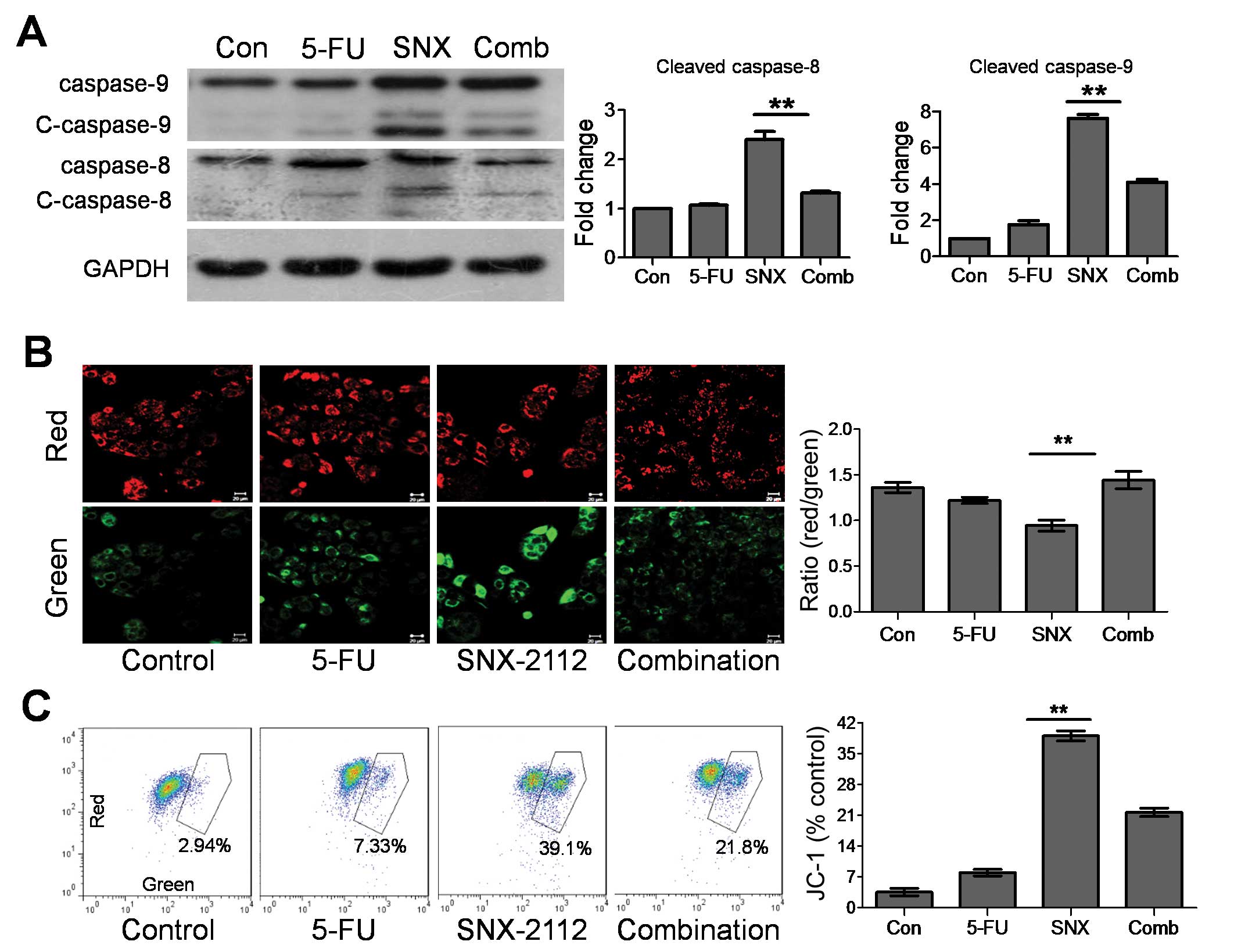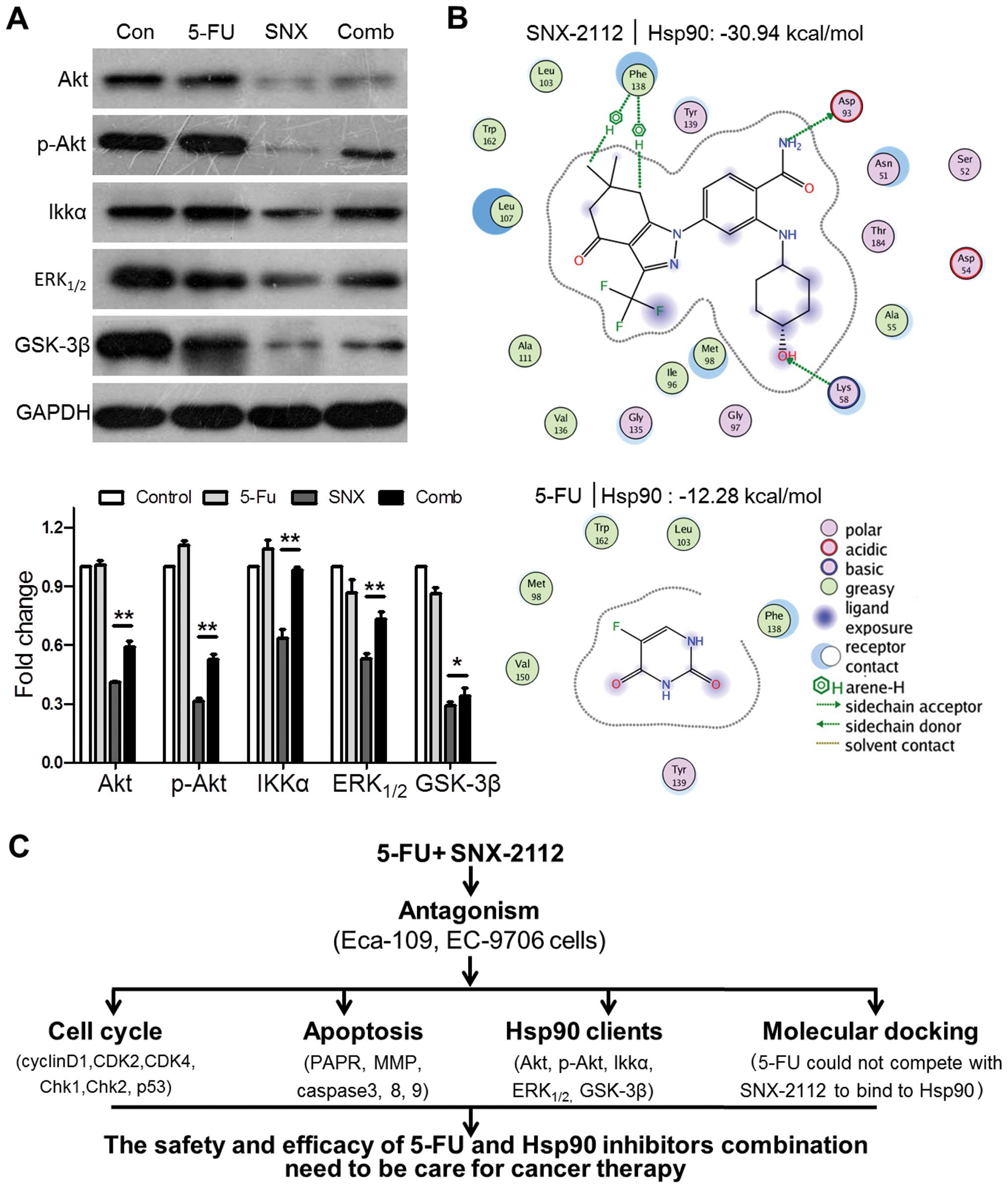|
1
|
Jemal A, Bray F, Center MM, Ferlay J, Ward
E and Forman D: Global cancer statistics. CA Cancer J Clin.
61:69–90. 2011. View Article : Google Scholar
|
|
2
|
He YT, Hou J, Chen ZF, et al: Trends in
incidence of esophageal and gastric cardia cancer in high-risk
areas in China. Eur J Cancer Prev. 17:71–76. 2008. View Article : Google Scholar : PubMed/NCBI
|
|
3
|
Tew WP, Kelsen DP and Ilson DH: Targeted
therapies for esophageal cancer. Oncologist. 10:590–601. 2005.
View Article : Google Scholar : PubMed/NCBI
|
|
4
|
Khushalani NI, Leichman CG, Proulx G, et
al: Oxaliplatin in combination with protracted-infusion
fluorouracil and radiation: report of a clinical trial for patients
with esophageal cancer. J Clin Oncol. 20:2844–2850. 2002.
View Article : Google Scholar : PubMed/NCBI
|
|
5
|
Burmeister BH, Walpole ET, D’Arcy N, et
al: A phase II trial of chemoradiation therapy with weekly
oxaliplatin and protracted infusion of 5-fluorouracil for
esophageal cancer. Invest New Drugs. 27:275–279. 2009. View Article : Google Scholar : PubMed/NCBI
|
|
6
|
Juergens RA and Forastiere A: Combined
modality therapy of esophageal cancer. J Natl Compr Cancer Netw.
6:851–861. 2008.PubMed/NCBI
|
|
7
|
Neckers L: Hsp90 inhibitors as novel
cancer chemotherapeutic agents. Trends Mol Med. 8(Suppl 4):
S55–S61. 2002. View Article : Google Scholar : PubMed/NCBI
|
|
8
|
Faried A, Sohda M, Nakajima M, Miyazaki T,
Kato H and Kuwano H: Expression of heat-shock protein Hsp60
correlated with the apoptotic index and patient prognosis in human
oesophageal squamous cell carcinoma. Eur J Cancer. 40:2804–2811.
2004. View Article : Google Scholar : PubMed/NCBI
|
|
9
|
Liu KS, Zhang Y, Ding WC, et al: The
selective Hsp90 inhibitor BJ-B11 exhibits potent antitumor activity
via induction of cell cycle arrest, apoptosis and autophagy in
Eca-109 human esophageal squamous carcinoma cells. Int J Oncol.
41:2276–2284. 2012.
|
|
10
|
Liu XL, Xiao B, Yu ZC, et al:
Down-regulation of Hsp90 could change cell cycle distribution and
increase drug sensitivity of tumor cells. World J Gastroenterol.
5:199–208. 1999.PubMed/NCBI
|
|
11
|
Wu X, Wanders A, Wardega P, et al: Hsp90
is expressed and represents a therapeutic target in human
oesophageal cancer using the inhibitor
17-allylamino-17-demethoxygeldanamycin. Br J Cancer. 100:334–343.
2009. View Article : Google Scholar : PubMed/NCBI
|
|
12
|
Bao XH, Takaoka M, Hao H-F, et al:
Antiproliferative effect of the HSP90 inhibitor NVP-AUY922 is
determined by the expression of PTEN in esophageal cancer. Oncol
Rep. 29:45–50. 2013.PubMed/NCBI
|
|
13
|
Rajan A, Kelly RJ, Trepel JB, et al: A
phase I study of PF-04929113 (SNX-5422), an orally bioavailable
heat shock protein 90 inhibitor, in patients with refractory solid
tumor malignancies and lymphomas. Clin Cancer Res. 17:6831–6839.
2011. View Article : Google Scholar : PubMed/NCBI
|
|
14
|
Wang X, Wang S, Liu Y, et al: The Hsp90
inhibitor SNX-2112 induces apoptosis of human hepatocellular
carcinoma cells: the role of ER stress. Biochem Biophys Res Commun.
446:160–166. 2014. View Article : Google Scholar : PubMed/NCBI
|
|
15
|
Wang R, Shao F, Liu Z, et al: The Hsp90
inhibitor SNX-2112, induces apoptosis in multidrug resistant
K562/ADR cells through suppression of Akt/NF-kappaB and disruption
of mitochondria-dependent pathways. Chem Biol Interact. 205:1–10.
2013. View Article : Google Scholar : PubMed/NCBI
|
|
16
|
Wang SX, Ju HQ, Liu KS, et al: SNX-2112, a
novel Hsp90 inhibitor, induces G2/M cell cycle arrest and apoptosis
in MCF-7 cells. Biosci Biotechnol Biochem. 75:1540–1545. 2011.
View Article : Google Scholar : PubMed/NCBI
|
|
17
|
Friedman JA, Wise SC, Hu M, et al: HSP90
inhibitor SNX5422/2112 targets the dysregulated signal and
transcription factor network and malignant phenotype of head and
neck squamous cell carcinoma. Transl Oncol. 6:429–441. 2013.
View Article : Google Scholar : PubMed/NCBI
|
|
18
|
Liu KS, Liu H, Qi JH, et al: SNX-2112, an
Hsp90 inhibitor, induces apoptosis and autophagy via degradation of
Hsp90 client proteins in human melanoma A-375 cells. Cancer Lett.
318:180–188. 2012. View Article : Google Scholar : PubMed/NCBI
|
|
19
|
Chou T-C and Talalay P: Quantitative
analysis of dose-effect relationships: the combined effects of
multiple drugs or enzyme inhibitors. Adv Enzyme Regul. 22:27–55.
1984. View Article : Google Scholar : PubMed/NCBI
|
|
20
|
Chou T-C: Drug combination studies and
their synergy quantification using the Chou-Talalay method. Cancer
Res. 70:440–446. 2010. View Article : Google Scholar : PubMed/NCBI
|
|
21
|
Kroemer G, Galluzzi L and Brenner C:
Mitochondrial membrane permeabilization in cell death. Physiol Rev.
87:99–163. 2007. View Article : Google Scholar : PubMed/NCBI
|
|
22
|
Ohba S, Hirose Y, Yoshida K, Yazaki T and
Kawase T: Inhibition of 90-kD heat shock protein potentiates the
cytotoxicity of chemotherapeutic agents in human glioma cells. J
Neurosurg. 112:33–42. 2010. View Article : Google Scholar : PubMed/NCBI
|
|
23
|
Proia DA, Sang J, He S, et al: Synergistic
activity of the Hsp90 inhibitor ganetespib with taxanes in
non-small cell lung cancer models. Invest New Drugs. 30:2201–2209.
2012. View Article : Google Scholar : PubMed/NCBI
|
|
24
|
Casimiro MC, Crosariol M, Loro E, Li Z and
Pestell RG: Cyclins and cell cycle control in cancer and disease.
Genes Cancer. 3:649–657. 2012. View Article : Google Scholar : PubMed/NCBI
|
|
25
|
Stepanova L, Leng X, Parker SB and Harper
JW: Mammalian p50Cdc37 is a protein kinase-targeting subunit of
Hsp90 that binds and stabilizes Cdk4. Genes Dev. 10:1491–1502.
1996. View Article : Google Scholar : PubMed/NCBI
|
|
26
|
El-Awady RA, Saleh EM, Ezz M and Elsayed
AM: Interaction of celecoxib with different anti-cancer drugs is
antagonistic in breast but not in other cancer cells. Toxicol Appl
Pharmacol. 255:271–286. 2011. View Article : Google Scholar : PubMed/NCBI
|
|
27
|
Crow MT, Mani K, Nam Y-J and Kitsis RN:
The mitochondrial death pathway and cardiac myocyte apoptosis. Circ
Res. 95:957–970. 2004. View Article : Google Scholar : PubMed/NCBI
|
|
28
|
Okawa Y, Hideshima T, Steed P, et al:
SNX-2112, a selective Hsp90 inhibitor, potently inhibits tumor cell
growth, angiogenesis, and osteoclastogenesis in multiple myeloma
and other hematologic tumors by abrogating signaling via Akt and
ERK. Blood. 113:846–855. 2009. View Article : Google Scholar : PubMed/NCBI
|
|
29
|
Fukuyama R, Ng KP, Cicek M, et al: Role of
IKK and oscillatory NFkappaB kinetics in MMP-9 gene expression and
chemoresistance to 5-fluorouracil in RKO colorectal cancer cells.
Mol Carcinog. 46:402–413. 2007. View
Article : Google Scholar : PubMed/NCBI
|
|
30
|
Azuma M, Yamashita T, Aota K, Tamatani T
and Sato M: 5-Fluorouracil suppression of NF-KappaB is mediated by
the inhibition of IKappab kinase activity in human salivary gland
cancer cells. Biochem Biophys Res Commun. 282:292–296. 2001.
View Article : Google Scholar : PubMed/NCBI
|
















